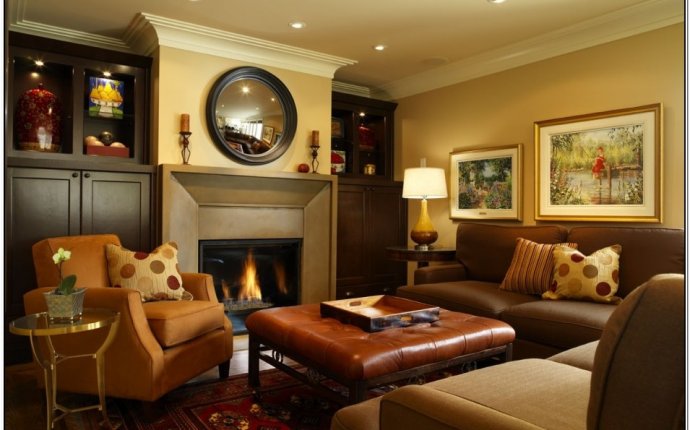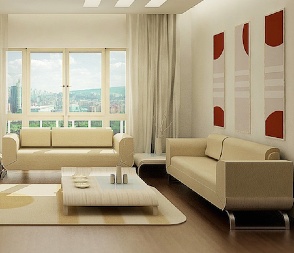
Feng Shui Color for Living Room Walls
 Your living room is the heart of your home. It’s a space where the members of the household gather, talk, receive guests and spend the most of their day.
Your living room is the heart of your home. It’s a space where the members of the household gather, talk, receive guests and spend the most of their day.
This space is abundant in yang energy, and the most important thing to do is to achieve a sense of harmony.
If the other rooms of your home are unbalanced, the living room can alleviate or even neutralize that entirely.
Separate it from the kitchen, dining room or bedroom
It’s desirable for the living room to physically be separated from the kitchen or dining room.
If that’s not possible, it’s necessary to visually separate the living room from the spaces where you eat and prepare food.
The living room should not be a place where one sleeps every day and it should be separated from bedrooms by a wall.
Wall and ceiling colors
It’s best to choose light shades for the walls.
Shades of yellow ranging from vanilla to beige are ideal. A warm yellow color encourages grounding to the earth and is the embodiment of power, safety, strength and warmth and create a feeling of community.
You can paint one wall to the south of the living room in a lively color – orange, red or pink. Soft yellow colors are the best choice for all other walls.
Unlike the walls, the ceiling is best painted white, and you should avoid having any decorations on it.
Floor
The floor is a very important segment of the living room. You should feel safe and protected when you stand in or step into the center of your home.
Parquet and laminate flooring are the best and all shapes and designs are allowed.
Rugs are not necessary, unless you opt for a stone or marble floor. In that case you should cover at least a part of the floor with a rug because of the cold energy of the stone.
It’s better not to cover wooden floors. Avoid dark colors when choosing rugs and carpets.
Selecting furniture
When you are furnishing your living room, leave sufficient space in the middle of the room.
The most important choice is that of your seating furniture – chairs, sofas and couches.
Tastes differ, but Feng Shui suggests you avoid furniture with sharp corners.
Place the main piece of furniture where you spend most of your time up against a sturdy wall as doing so will provide a sanctuary.
Arrange the remaining sofas or chairs so they create a shape with right angles or form a circle or a horseshoe.
Avoid distributing furniture around the room chaotically.
It’s favourable that you have a view of as large a section of the living room or entire home as possible when you are seated.
If you can, get new furniture.
Used furniture often carries a stagnant, old chi energy which impacts health and happiness negatively. The same is true of antique details.
Cabinets and shelves in the living room primarily have a decorative function and they should therefore not take up too much space.
If you need to store things you don’t have enough room for in other parts of your home here, always choose closed cabinets.
Open shelves symbolize blades which injure the space and the people in it and they should therefore be avoided. They indirectly harm the careers of those in the household who are employed.
Chairs can be any shape as long as they are not asymmetrical.
When choosing a color for your furniture, avoid black, because it can set loose fear, depression and violence.
Appropriate lighting and electronic devices
The living room is the place where we keep the most electronic devices. Keep them in the right location – to the north, northwest or west side of the room.
Televisions, computers and acoustic devices should never occupy the central position in the room which everyone is facing because they have a negative effect on the interaction between members of the household.
Materials made of crystal create the most favourable energy. But if you are not able to have a crystal chandelier or don’t like crystal décor, you can also use other lighting.
What matters is that the lighting has some sort of shade and that the light it provides is a milky color which doesn’t tire the eyes.
The space can be lit up in various ways and using multiple light sources.
But be careful not to create dark spaces in the room with your use of lighting. Such an atmosphere brings feelings of sorrow.
Put up decorations carefully
Feng Shui recommends moderation and orderliness. The space should not be overcrowded with unnecessary things.
Because important symbolic objects and decorations are often kept in the living room, their proper placement can bring about balance in various areas of life.
Souvenirs or other objects which have been sitting in the same place for years create a stale energy which makes progress impossible.
Dare to make a change.
You can make things dynamic by changing photographs.
You will attract new energy, people and things in life by occasionally moving things around and getting rid of things you no longer need.
Arranging objects according to parts of the world
The north part of the room represents work and career and it needs to be clean, well-lit and looking towards the future.
Memories can’t be collected here, nor can antiques or anything related to the past. Ideal motifs include turtles, mountain tops or winter landscapes which can be hung on the wall in the form of photographs or paintings.
The northeast part of the room represents learning and wisdom. It’s under the earth element and will be activated by a picture of the world, a globe or crystals.
This is also a place for symbols of the spiritual leader who is important to you. If you are going to school, you can occasionally light a candle or incense in that part of the room for success.
The east section symbolizes health, longevity, relations with loved ones and the oldest son, if you have children.









